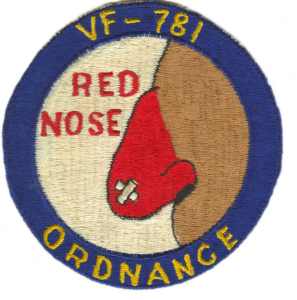Fighter Squadron VF-781
“Pacemakers”


“Armed Forces: First in War …”, Time Magazine, pg. 11, 31 July 1950. Accessed 1 April 2023.

ARMED FORCES: First in War . . .
Stuffed in odd places around home were a full share of tarnished Navy Crosses, D.F.C.s and Air Medals from World War II. But for four years everybody in VF-781 had been too busy flying in the present to bother polishing up the past. One weekend every month 36 Naval Reserve pilots would converge on the Los Alamitos (Calif.) Naval Air Station and thunder off on maneuvers in their stubby Grumman Hellcat fighters—unanimously elated to escape from the humdrum chores of selling insurance, studying law or changing diapers. Their bashful, blond skipper, Lieut. Commander Collin Oveland, 32, was a weekday Mercury salesman who had dared them into the Navy’s sassiest, .busiest, closest-knit Sunday fighter outfit—with first place in flight time over all other west coast squadrons. All of the pilots were combat veterans, all but eight were married.
Last week VF-781, volunteering to the man, became the first organized reserve squadron to be accepted intact for the Korean war. Every pilot in the squadron was ready for active duty on one condition, that they go as a unit. Forty of VF-781’s enlisted ground crewmen felt the same way. Their prompt and unanimous application got a brisk salute from Vice Admiral John Dale Price in Washington—and a sheaf of orders to duty. —

